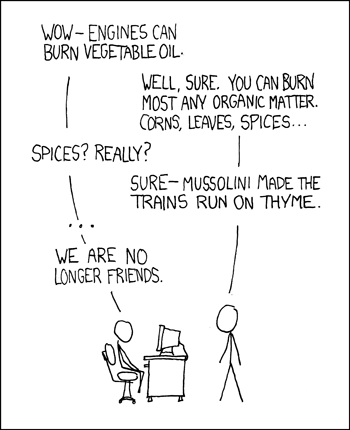First of all, seems like it has been over half a year since we had chemistry in Science 10, so I don't expect anyone of you would still remember what an organic compound is. But that's totally fine, because I'm going to give you a brief recap right now:
An organic compound is any molecular compounds that contains carbon, usually with the support of oxygen and hydrogen. Two common examples are methane(CH4) and glucose (C6H12O6). However, some carbon containing compounds such as CO2 and carbonate does not considered as organic compound.
← Caffeine (C8H10N4O2) is a nitrogenous organic compound
Empirical Formula of Organic Compounds
Since we have been receiving positive feedback on the Million Dollar Question from last time, we decided to hold another brain melt section called the "Double Dare"!!!
Our thousand points question for today is:
What is the empirical formula of a compound that when a 0.952 gram sample is burned and produces 1.35g of CO2 and 0.826g of H2O?
Step 1. Find out the moles of CO2 and H2O
(Tips: grams to mole → divide the # of moles by the molar mass of elements)
mol CO2 = 1.35g CO2 x 1 mol CO2 = 0.0307 mol
44.0g CO2
mol H2O = 0.826g H2O x 1 mol H2O = 0.04589 mol
18.0gH2O
∴During the burning, 0.0307mol carbon dioxide and 0.04589mol water were produced.
Step 2. Find out the moles of Carbon and Hydrogen
(Tips: mole of compound to mole of element → multiply the total number of mols by the number of atoms per molecule)
C = 0.0307mol x 1C = 0.0307 molC
H = 0.04589mol x 2H = 0.09178 molH
∴Now, we know that the empirical formula of the original substance is
C0.0307H0.09178, however, we DO NOT like decimals like that. So we'll need to convert it into whole numbers.
Step 3. Convert to whole numbers (We all have a pet-peeve for ugly things, now fix it and satisfy our needs.)
(Tips: Divide each value of mole by the smallest number of moles)
C = 0.0307÷0.0307 = 1
H = 0.09178÷0.0307 = 2.9896
∴Since 2.9896 is closed to 3, the answer is CH3.
Now, don't put down your pens yet. We still have to do the last step: Check Mass.
Step 4. Check Masses (Like we all do everyday to ensure our beautiful public images...JOKES)
(Tips: To check if the mass balance, add the mass of carbon and hydrogen together, then compare to the sample's original mass)
0.0307 molC x 12 g = 0.3684g of C
1mol
0.04589 molH x 1 g = 0.04589g of H
1mol
Total Mass = 0.3684g + 0.04589g = 0.41429g
Substance's original mass = 0.952g
0.41429g ≠ 0.952g
OMG!! The total mass does NOT equals the original mass! No way! Does it mean that I should go back to step one and do this all over again?
Now, calm down.
If the mass of carbon and hydrogen does not equal the mass of compound, it means that there is another element involved, which is oxygen.
Step 5. Find the mass of Oxygen (In short, Find MoO.)
(Tips: mass of O = mass of compound - mass of C + H)
Mass of O = 0.952g - 0.41429g = 0.53771g
Step 6. Convert mass of Oxygen to moles (We love to interact with moles very much!)
0.53771g O x 1 mol = 0.0336 mol O
16.0 g
Step 7. Convert to whole numbers (again...feeling tired already?)
C = 0.0307÷0.0307 = 1
H = 0.09178÷0.0307 = 2.9896
O = 0.0336 ÷0.0307 = 1.0945
∴The FINAL CORRECT answer for this question is CH3O.
Phew! This is pretty much for today! Here's two jokes about chemistry for you. Though they are not related to today's topic.
Q: What do you get when you mix iron, bromine, uranium, argon, and yttrium?
A: FeBrUArY (iron=Fe,bromine=Br,uranium=U,argon=Ar,yttrium=Y)
Q: What did Donald Duck say in his chemistry class?
A: Quark, quark, quark
Not laughing hard enough? Well, try something organic:





No comments:
Post a Comment